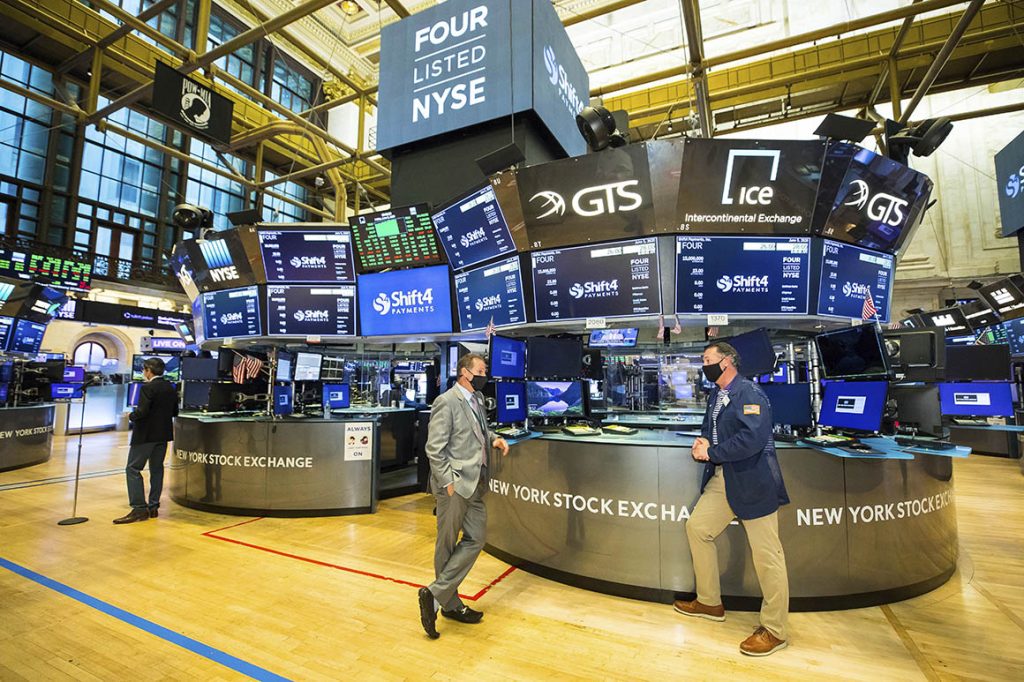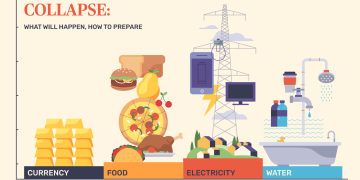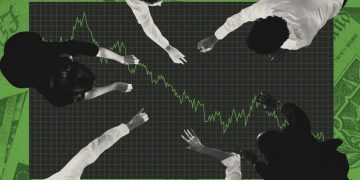Introduction
The aftermath of the COVID-19 pandemic has left an indelible mark on financial markets worldwide, with Wall Street at the center of this turbulent period. From historic plunges to rapid recoveries, the volatility of the past few years has provided investors with a dramatic roller coaster ride. As we move beyond the pandemic, market fluctuations remain a central feature of the investment landscape. The key question now is how long-term investors can best navigate these uncertain waters. This article reviews Wall Street’s performance since the pandemic, delves into expert analysis on how investors should adapt, explores the impact of external factors like geopolitical tensions and interest rate hikes, and offers practical investment strategies for uncertain times.
1. Wall Street’s Performance Since the Pandemic and Key Market Fluctuations
When the pandemic first hit in early 2020, Wall Street faced one of its most significant downturns in modern history. The market experienced a rapid decline, with major indices like the Dow Jones Industrial Average, S&P 500, and NASDAQ plunging into bear market territory within weeks. The immediate cause was the global economic shutdown as governments implemented lockdown measures to contain the spread of the virus. However, the market’s recovery was just as swift, aided by unprecedented government stimulus packages, low interest rates, and the rollout of vaccines. By the end of 2020 and into 2021, Wall Street had regained much of its losses and even reached new all-time highs.
In 2022, however, the market experienced further volatility, as inflation concerns began to rise sharply. The Federal Reserve’s decision to tighten monetary policy, coupled with ongoing supply chain disruptions, led to a sharp sell-off in stocks. Geopolitical tensions, particularly Russia’s invasion of Ukraine, only exacerbated market uncertainty, leading to significant fluctuations across global markets. Despite these challenges, there has been a steady resurgence in investor confidence, driven by sectors such as technology, green energy, and consumer goods.
Yet, even as some sectors of the market thrive, overall volatility remains a fixture in the post-pandemic environment. This instability has left many investors questioning how long they can continue to ride the roller coaster of highs and lows, and whether traditional investment strategies are still relevant in a world marked by unpredictability.
2. Expert Analysis on How Long-Term Investors Should Adapt to Market Volatility
According to financial experts, long-term investors must first and foremost acknowledge that volatility is now a permanent part of the market landscape. While the markets may not return to the steady growth periods seen in previous decades, there are still opportunities to generate substantial returns by adopting strategic approaches.
One key piece of advice from market experts is the importance of maintaining a diversified portfolio. A diversified investment strategy helps reduce the risk of large losses from any single asset class or sector. For instance, investors should consider balancing traditional equities with fixed income securities, real estate, and alternative investments like commodities or hedge funds. By spreading risk across multiple asset classes, long-term investors are better positioned to withstand market fluctuations.
Additionally, experts suggest that long-term investors should focus on quality assets with strong fundamentals, even in volatile times. While short-term market swings can lead to dramatic price changes, companies with solid earnings growth, strong balance sheets, and resilient business models are likely to outperform in the long run. Identifying these companies and holding them through periods of market uncertainty can provide investors with significant gains over time.
Another key strategy is to remain patient and avoid reacting impulsively to market fluctuations. Many investors are prone to panic selling when market conditions deteriorate, but history shows that markets tend to recover over time. In fact, the most successful long-term investors are those who stay the course during periods of market stress and avoid emotional decision-making.
Lastly, some experts recommend incorporating a tactical allocation strategy into one’s investment plan. This involves actively adjusting the portfolio based on economic conditions, market trends, and forecasts. For example, if inflation is expected to rise, investors may choose to shift more capital into inflation-protected securities or commodities. While this strategy requires more frequent monitoring and adjustments, it allows investors to capitalize on short- to medium-term opportunities while staying aligned with long-term objectives.

3. The Impact of External Factors: Geopolitical Tensions and Interest Rate Hikes
While market volatility is often driven by internal economic factors, external forces can play a significant role in exacerbating market uncertainty. One such external factor has been the ongoing geopolitical tensions that have influenced global markets. The war in Ukraine, tensions between China and Taiwan, and trade disputes between major economies have created an environment of uncertainty that makes it harder for investors to predict the market’s trajectory. These geopolitical risks have led to fluctuating commodity prices, supply chain disruptions, and increased volatility in stock and bond markets.
For example, the Russia-Ukraine conflict has had a direct impact on global oil and gas prices, with investors closely watching fluctuations in energy markets. Similarly, the disruption of agricultural exports from Ukraine has contributed to food price inflation. These developments have triggered widespread economic uncertainty, leading to sharp swings in global markets as investors react to new developments.
Interest rate hikes, another external factor, have also played a pivotal role in market volatility. In response to rising inflation, the Federal Reserve and other central banks have aggressively raised interest rates to curb price growth. While interest rate hikes are necessary to control inflation, they can have negative effects on the stock market. Higher borrowing costs can reduce corporate profitability and slow down economic growth, leading to investor concerns about future earnings. Additionally, higher interest rates tend to make bonds more attractive relative to stocks, which can lead to capital flowing out of equities and into fixed income securities.
The impact of these external factors can be seen in the market’s erratic performance over the past few years. While some sectors, such as energy and defense, have benefited from geopolitical tensions, others, such as tech stocks, have faced pressure from higher interest rates and supply chain disruptions. Long-term investors must consider these external influences when making decisions about their portfolios.
4. Practical Investment Strategies for Uncertain Times
In an environment marked by volatility, long-term investors need to be prepared to adapt to changing conditions. Here are some practical investment strategies for uncertain times:
- Stay Diversified – As previously mentioned, diversification is a key strategy in times of uncertainty. A well-diversified portfolio helps mitigate the risk of large losses and can provide more stable returns over time. Investors should consider diversifying across sectors, asset classes, and geographic regions.
- Focus on Dividend Stocks – Dividend-paying stocks tend to be more stable during periods of market volatility. These stocks provide a regular income stream, which can help offset declines in capital gains. Furthermore, companies that consistently pay dividends are often financially stable and have strong business models.
- Invest in Defensive Sectors – Defensive sectors, such as utilities, healthcare, and consumer staples, tend to be less sensitive to market volatility and economic cycles. These sectors offer more stability because they provide essential products and services that consumers need regardless of economic conditions.
- Dollar-Cost Averaging – In volatile markets, it can be difficult to time investments. Dollar-cost averaging (DCA) is a strategy where investors commit a fixed amount of money to investments on a regular basis, regardless of market conditions. Over time, DCA helps smooth out the impact of market fluctuations and can lower the average cost of investments.
- Look for Opportunities in Crisis – While uncertainty can be unsettling, it can also present investment opportunities. During times of crisis, some assets may become undervalued, providing long-term investors with the chance to purchase them at a discount. Identifying quality assets during market downturns and holding them for the long term can lead to significant returns when markets eventually recover.
Conclusion
Navigating Wall Street’s roller coaster in the post-pandemic market requires a strategic, long-term approach. While volatility is likely to persist, careful planning, diversification, and patience can help investors thrive in uncertain times. External factors like geopolitical tensions and interest rate hikes may continue to add to market instability, but by staying informed and adaptable, long-term investors can position themselves to take advantage of opportunities and weather the storms ahead.































